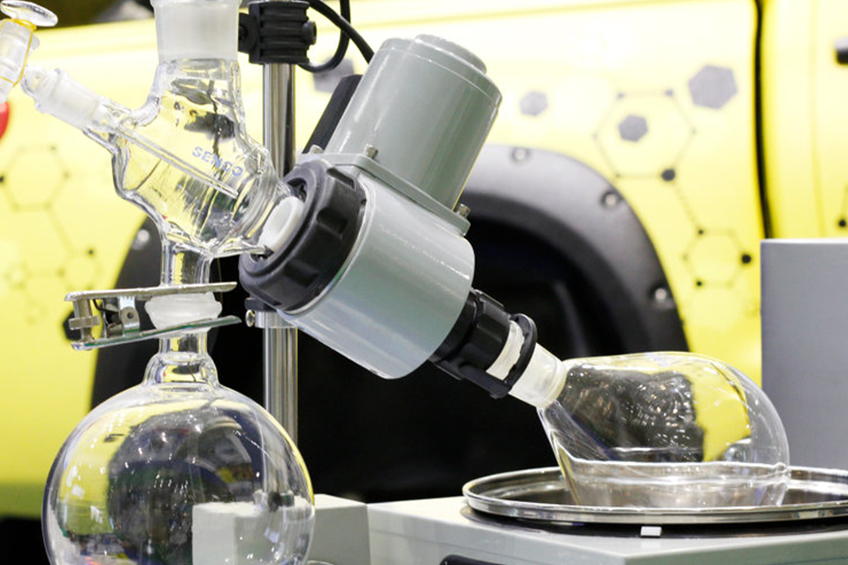OELs and PDEs
Health based exposure limit assessments are required for all active pharmaceutical ingredients (APIs) to ensure the appropriate organisational and technical control measures are in place for producing medicinal products.
Occupational Exposure Limit (OEL)
An OEL written by an ApconiX expert toxicologist will summarise decisions with justification and final numerical value, based on the most informative current toxicology data, to calculate the OEL by inhalation and will clearly identify any hazards known or unknown. The data and conclusions are clearly presented and data sources are referenced. As more data becomes available, the report can also be updated.
OEL refers to the maximum airborne concentration of a chemical which most workers could be exposed to without consequent adverse health effects or impacts. Exposure limits are typically expressed as milligrams of substance per cubic meter of air (mg/m3).
Regulatory authorities in many countries have established criteria for determining the degree of occupational exposure to hazardous substances in the workplace atmosphere. There are lists of OELs for common and known hazardous chemical substances. For many substances however, and especially novel APIs, no limits have been defined. Often these substances do not have a rich dataset to draw from.

The OEL calculation is recommended for pharmaceuticals by the Occupational Safety and Health Administration (OSHA) and several other agencies including the American Conference of Governmental Industrial Hygienists (ACGIH), National Institutes of Occupational Safety and Health (NIOSH), Japan Society for Occupational Health (JSOH) and European Chemical Agency (ECHA).
There are well established procedures for setting OELs. The toxicology experts at ApconiX utilise the No Observed Adverse Effect Level (NOAEL) according to the guidelines published by the International Council for Harmonisation (Guideline Q3C(R5), 1997: Impurities: Guideline for Residual Solvents (Appendix 3)) and the European Medicines Agency (Guideline on setting health-based exposure limits for use in the manufacture of different medicinal products in shared facilities, 2014). All available pharmacological and toxicological data is considered, particularly with respect to acute or chronic toxicity, carcinogenicity, mutagenicity and toxicity to reproduction.
An OEL written by an ApconiX expert toxicologist will summarise decisions with justification and final numerical value, based on the most informative current toxicology data, to calculate the OEL by inhalation and will clearly identify any hazards known or unknown. The data and conclusions are clearly presented and data sources are referenced. As more data becomes available, the report can also be updated.
Permitted Daily Exposure (PDE)
The Permitted Daily Exposure (PDE) represents a substance-specific dose that is unlikely to cause an adverse effect if an individual is exposed at or below this dose every day for a lifetime. Exposure limits are typically expressed as milligrams of substance per kg of body weight (mg/kg).
The PDE represents a substance-specific dose that is unlikely to cause an adverse effect if an individual is exposed at or below this dose every day for a lifetime. Exposure limits are typically expressed as milligrams of substance per kg of body weight (mg/kg).
There are well established procedures for setting PDEs. The toxicology experts at ApconiX utilise the No Observed Adverse Effect Level (NOAEL) according to the guidelines published by the International Council for Harmonisation (Guideline Q3C(R5), 1997: Impurities: Guideline for Residual Solvents (Appendix 3)) and the European Medicines Agency (Guideline on setting health-based exposure limits for use in the manufacture of different medicinal products in shared facilities, 2014). All available pharmacological and toxicological data is considered, particularly with respect to acute or chronic toxicity, carcinogenicity, mutagenicity and toxicity to reproduction.

An PDE written by an ApconiX expert toxicologist will summarise decisions with justification and final numerical value, based on the most informative current toxicology data, to calculate the PDE by oral ingestion and will clearly identify any hazards known or unknown. The data and conclusions are clearly presented and data sources are referenced. As more data becomes available, the report can also be updated.
Our OEL and PDE Expert

Dr Guy Healing
PhD, ERT, FBTS
Dr Guy Healing is a Senior Toxicologist with ApconiX Ltd. Until 2016 he was an Associate Director in the Drug Safety and Metabolism department at AstraZeneca, heading up the Regulatory Submissions Group and the Study Monitoring team. He started his career working for the Medical Research Council at the Clinical Research Centre at Northwick Park Hospital in London, followed by a brief spell working at a large pre-clinical CRO. He then spent five years with Schering Agrochemicals, before joining AstraZeneca (formerly Astra) Pharmaceuticals in 1996. Guy has extensive experience in monitoring and directing pre-clinical studies, has sat on Project teams and managed groups of Project Toxicologists and Study Monitors.
Guy is a European and UK Registered Toxicologist, a Fellow of the British Toxicology Society and a member of the Panel for the UK Register of Toxicologists. He sat on the BTS Executive Committee as Treasurer of the Society between 2010 and 2016, and edited the Society Newsletter between 1995 and 2005. He is an Editorial Board member for the Journal of Applied Toxicology and Toxicology Reports and has published widely in peer reviewed journals, as well as editing textbooks on preclinical infusion technology.




